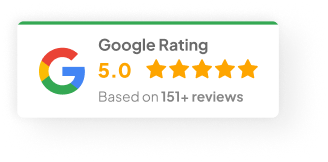12 Feb 25
Which Of The Following Is Not Likely To Be Found On A Webpage?
Building a website sounds simple. But I can tell you after 20 years of working with businesses—small startups, big corporates, you name it—this is where most people either overcomplicate things or forget the basics.
Your website is like your shopfront. If you clutter it up with random stuff, people leave. If you make it clean, clear and helpful, people stick around.
Let’s break down what absolutely belongs on your site, what doesn’t, and how to get the mix right.
The Stuff Every Good Website Needs
Look, most websites—whether you’re selling skincare or offering accounting services—rely on a few core building blocks. Strip away the fluff and these are the bits that do the heavy lifting:
1) Text Content (Still King, Always Will Be)
Text is the backbone. Doesn’t matter how pretty your site is—if your words aren’t clear, you’re sunk.
-
Explain your products.
-
Tell people what you do.
-
Give contact details.
-
Help Google understand your business.
For example, we had a client last year—a local plumbing outfit in Melbourne. Their original homepage had about 300 words of vague, generic copy. We rewrote it, added simple, punchy service descriptions, threw in a few local suburbs, and their leads shot up within 6 weeks.
Good words matter.
2) Images & Media That Actually Help
Nobody wants to scroll through walls of text. That’s where photos, videos, infographics come in.
-
Product shots
-
Team photos (people love seeing who they’re dealing with)
-
Explainer videos or demos
-
Simple diagrams that break down complex info
The trick is: every image should serve a purpose. That cheesy stock photo of two guys shaking hands? Bin it.
3) Navigation Menus That Don’t Make You Think
Menus are like road signs. You shouldn’t need to stop and figure them out.
-
Keep them short (5-7 items max is usually safe)
-
Use words your customer would actually search
-
No weird jargon
I’ve seen businesses lose sales because people simply couldn’t find the booking form.
4) Call To Action (CTA) Buttons
This is where you gently nudge your visitors to take the next step.
-
“Get A Quote”
-
“Book A Free Call”
-
“Download The Guide”
Every page should have some kind of CTA. Otherwise, you’re leaving money on the table.
5) Contact Forms & Info
Basic stuff, but often overlooked.
-
Contact forms that actually work.
-
Visible phone numbers & emails.
-
Live chat if you can manage it.
-
Social links if relevant.
I always tell clients: if a visitor has to hunt for your phone number, they’re calling your competitor.
What You Should Leave Out (Seriously, Don’t Do These Anymore)
Now, here’s where a lot of sites go off the rails. These things either feel outdated or just flat out annoy your visitors.
1) Flash Animations
Back in 2008, everyone thought Flash was cool. Today? Dead.
-
Modern browsers don’t support it.
-
It’s terrible for mobile.
-
Security nightmare.
If you want smooth animations, stick to CSS or light JavaScript.
2) Autoplay Music or Sounds
I still see this pop up sometimes, and every time I think: why?
-
It surprises people (not in a good way).
-
People surf the web at work or late at night.
-
Creates immediate bounce rates.
Let users hit play if they want sound.
3) Heavy JavaScript Widgets
There was a time when every site had live stock tickers, news feeds, spinning logos. But:
-
They slow your site down.
-
They mess with mobile responsiveness.
-
Google hates slow pages (so do users).
Keep scripts minimal. Speed is king.
4) Irrelevant Content
If it doesn’t serve your customer’s goal, cut it.
-
Don’t blog about your office Christmas party.
-
Avoid stuffing pages with random keyword-stuffed nonsense.
-
Keep things useful, focused, and relevant to your service.
Example: one of my clients had a perfectly fine IT services website—except half their blog posts were about coffee brewing. Didn’t help them rank, didn’t help visitors. We scrapped it. Their bounce rate halved.
5) Excessive Pop-Ups
Pop-ups can work if used well. But most don’t.
-
No more than one popup per session.
-
Never cover the whole screen.
-
Don’t interrupt someone 3 seconds after they land.
Exit-intent offers? Fine. Newsletter signup after they’ve read a bit? Fine. Everything else? Careful.
How To Decide What To Include
When you’re planning out your site, run everything through these filters:
-
Does this help my customer?
-
Does this get them closer to my goal?
-
Will this load fast on mobile?
-
Is it easy to find?
-
Does this build trust?
Simple rule: if it confuses or annoys people, it’s not worth it.
Quick Wrap Up
At the end of the day, a website’s job is pretty simple:
-
Help people understand what you offer.
-
Make it easy for them to act.
-
Don’t give them reasons to leave.
Less clutter, more clarity. That’s where the magic happens.
By the way — if you were building your website right now, what’s one feature you’re still unsure whether to keep or ditch?


